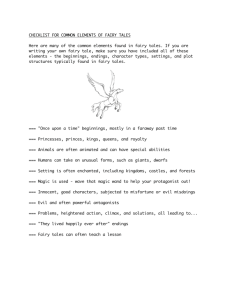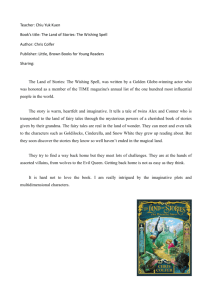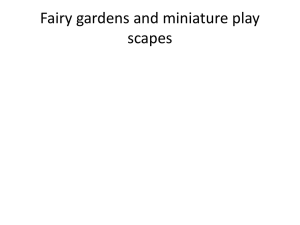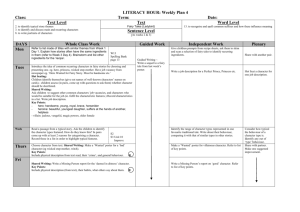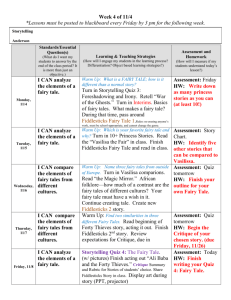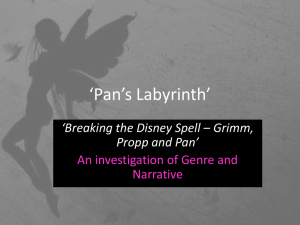How to Write a Fairy tale!
advertisement
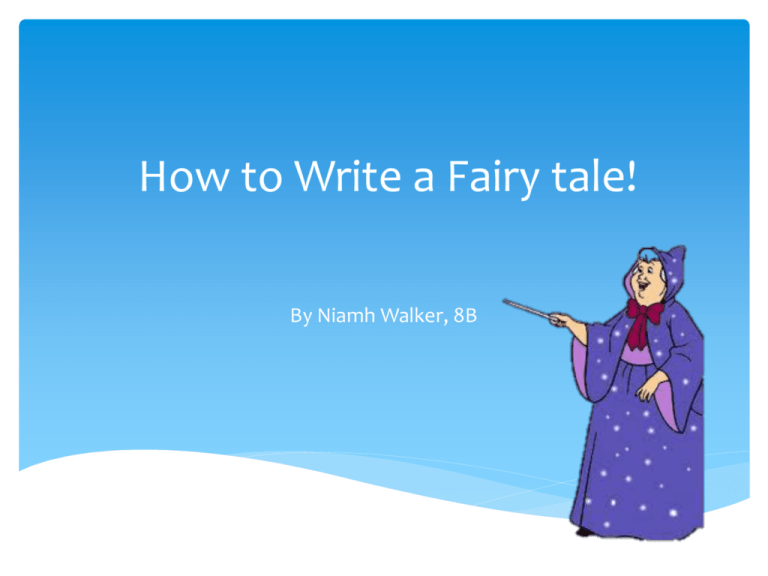
How to Write a Fairy tale! By Niamh Walker, 8B Have you been wanting to write a fairy tale but are unsure of how to do it? Are you confused by which conventions your story should have? Just follow these simple steps and worry no more! Step 1- The Setting Settings are very important in fairy tales as they help to set the mood. For example, if the fairy tale is set in a dark and gloomy cave, we can infer that the mood will be rather dark and gloomy too. Use descriptive techniques such as similes/ metaphors, adjectives and personification to create imagery for the reader… making your story a lot more interesting! Step 2- Characters In fairy tales, there are different types of characters that appear frequently in multiple storylines. Some of the most common include: o A damsel in distress ( e.g. Rapunzel, Sleeping Beauty etc.) o An influential parental figure who is normally responsible for the damsel’s terrible situation o A dashing hero ( usually a prince) who go to rescue the damsel and instantly fall in love (e.g. Prince Charming) o A wicked villain (usually a witch) who terrorises the damsel (e.g. the Wicked Stepmother) Step 4- Opening Openings of fairy tales normally begin with the famous line of ‘once upon a time’, but this is a bit of a cliché so we tend to use different ways of starting. You could use the time of day, an introduction to the character by using a flashback to show how they are in their current situation or plunge straight into the story with a sentence such as ‘Cinderella wept… harder than she ever had done before.’ and then explain the situation further- it’s totally up to you. You also need to determine whether you want your story to be past tense or present, first person or third- you choose! Step 5- Development & Complication Once you’ve introduced the main characters, you need to begin on building up the story. This may include mentioning possible threats to the main character and plots that may put them in danger (note: a good thing to do is starting to drop a few subtle hints to the reader about future problems that may occur to keep them engaged). Step 6- Crisis The crisis part of the story is when the main character is finally hit with a problem. To create tension or suspense at this point, be sure to use short sentences and plenty of description to portray the characters’ true emotions and if you want to use speech, don’t use too much as it may become boring. Speech is like chocolate: a little bit is nice, but if you have too much you’ll become sick of it! Step 7- Resolution How is the crisis going to be resolved? It is usually at this point in the fairy tale that we introduce the hero to rescue the damsel and sweep her off her feet! Step 8- Ending By now, any loose ends to your story should be tied up and the previous problem now a distant memory to your characters. Normally, fairy tales end with the damsel marrying the hero and they all live ‘happily ever after’… But not always!!!! I hope you’ve found these tips helpful and have made your fairy tale A SUCCESS!


